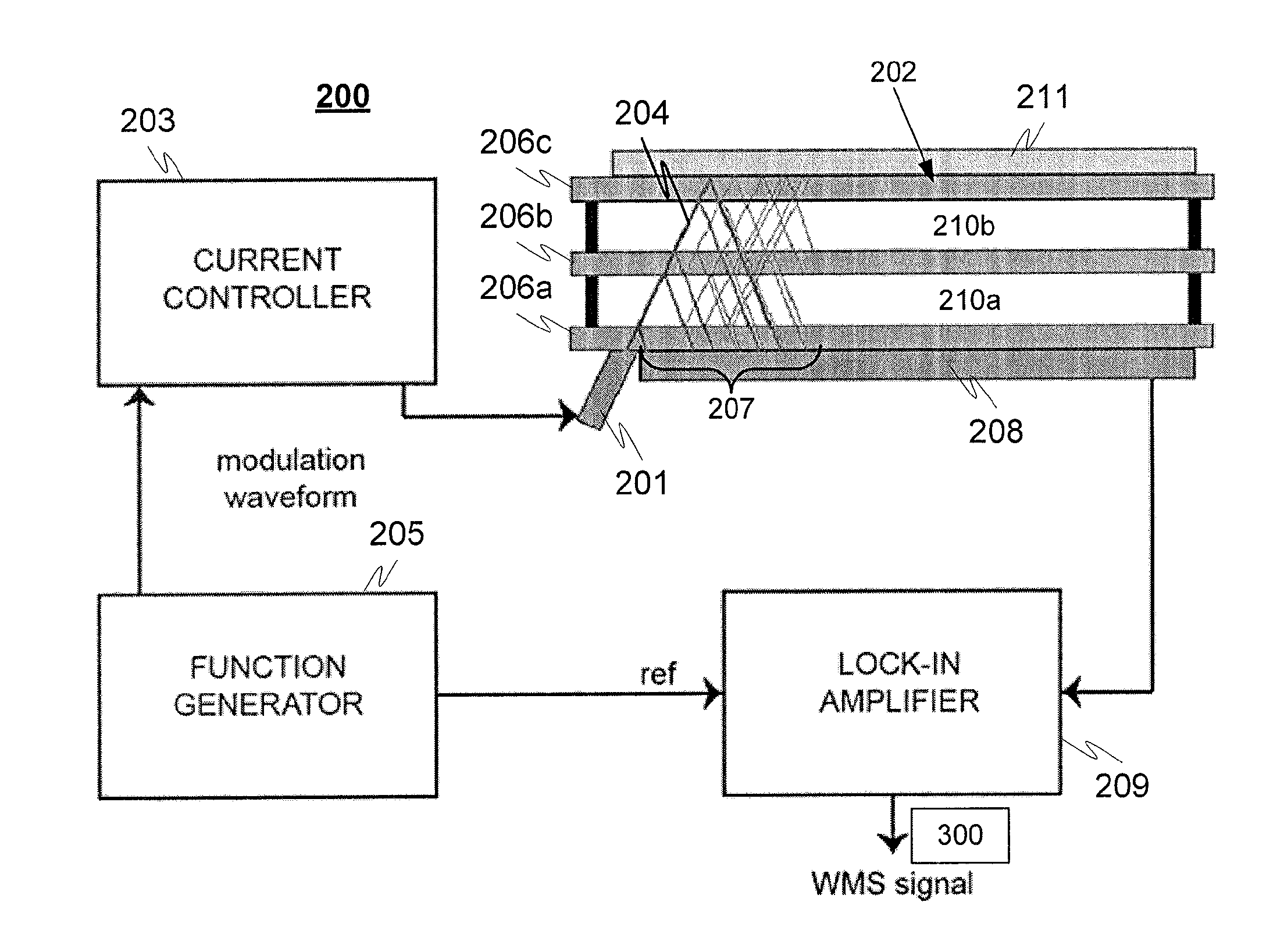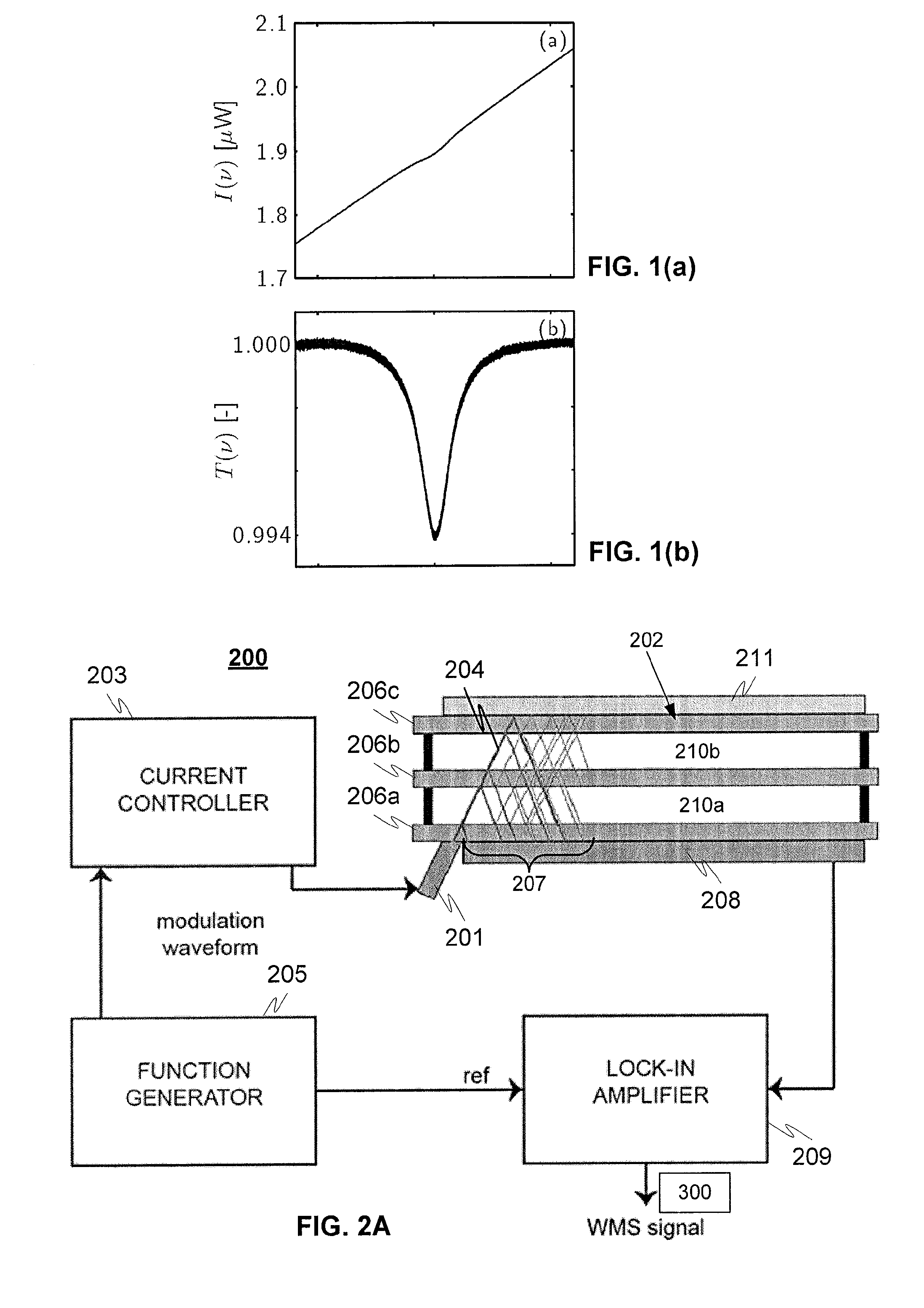Method and device for measuring gas component concentration inside a glass unit
a technology of gas component and glass unit, which is applied in the direction of material analysis, instruments, spectral investigation, etc., can solve the problems of invasive methods, inability to directly access conductivity measurement, and broken glass unit surfa
- Summary
- Abstract
- Description
- Claims
- Application Information
AI Technical Summary
Benefits of technology
Problems solved by technology
Method used
Image
Examples
Embodiment Construction
[0062]FIGS. 1(a) and 1(b) relates to measurements and phenomena known from prior art, and are discussed earlier in this document.
[0063]FIGS. 2a-2e illustrates principles of exemplary measuring constructions 200 for determining a gas component concentration inside a transparent structure according to an advantageous embodiment of the invention.
[0064]According to an embodiment of the invention an apparatus comprises a light source 201 for emitting at least one light beam to the surface of the object, such as a glass unit 202. The light source is advantageously a narrow-band light source, which could be e.g. Vertical Cavity Surface Emitting Laser (VCSEL). The wavelength of emitted laser may be controlled e.g. by current by an adjustable current source 203. According to an embodiment the laser beam emitted 204 is modulated by introducing a modulation waveform to the current controller of the laser source (e.g. by WMS technique). For example an arbitrary waveform generator 205 can be use...
PUM
| Property | Measurement | Unit |
|---|---|---|
| concentration | aaaaa | aaaaa |
| wavelength | aaaaa | aaaaa |
| concentrations | aaaaa | aaaaa |
Abstract
Description
Claims
Application Information
 Login to View More
Login to View More - R&D
- Intellectual Property
- Life Sciences
- Materials
- Tech Scout
- Unparalleled Data Quality
- Higher Quality Content
- 60% Fewer Hallucinations
Browse by: Latest US Patents, China's latest patents, Technical Efficacy Thesaurus, Application Domain, Technology Topic, Popular Technical Reports.
© 2025 PatSnap. All rights reserved.Legal|Privacy policy|Modern Slavery Act Transparency Statement|Sitemap|About US| Contact US: help@patsnap.com



